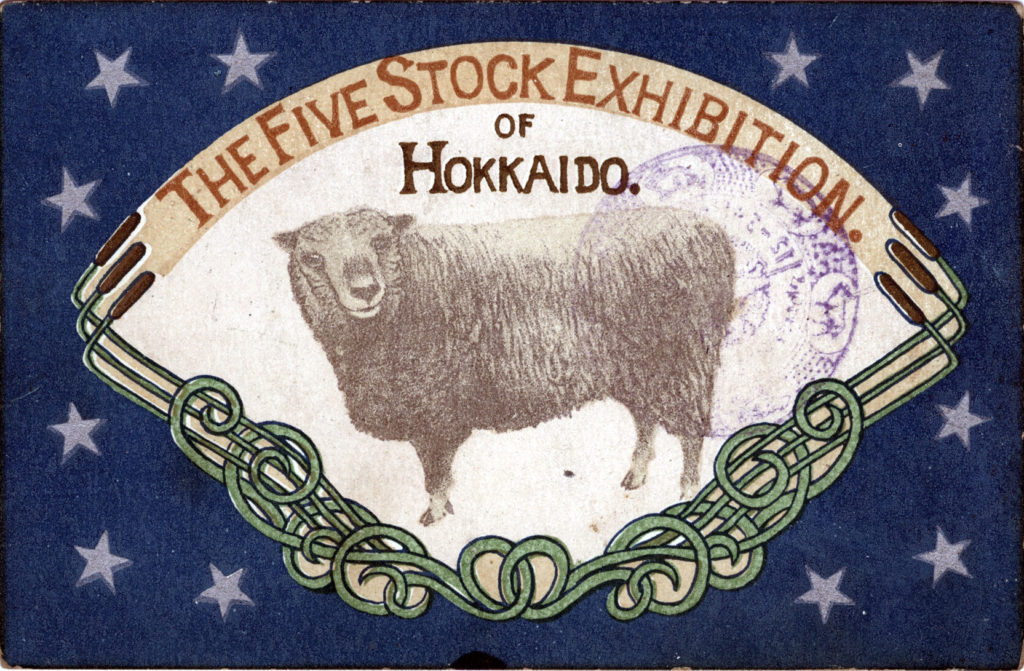
“Five Stock Exhibition of Hokkaido,” c. 1920. “Five stock” refers to the principal livestock herded on farms or ranches: Horses, cattle, sheep, swine, or goats.
“One day in Tokyo, when I happened to turn over the photograph of a British woman war worker feeding pigs, a Japanese clerk looked over my shoulder and asked if the animals were sheep. Sheep are so rare that an old ram was once exhibited at a country fair as a lion. The difference between the agriculture of the West, based on livestock, and the agriculture of Japan, based on rice, could not be more amusingly illustrated.
“But a section of the Japanese agricultural world turns its eyes longingly to mixed farming; and so, when I returned to Sapporo from my trip to the north of Hokkaido, I was taken to see a Government stock farm with a smoking volcano in the background.
“There were fine cows, some pigs and sheep, two self-binders, a dairymaid who looked to the manner born, and collies The extent to which the knack of looking after animals and a liking for animals can be developed is an interesting question. Experts in stock, keeping with generations of experience behind them, will agree that it is on the answer to this question that the success or non-success of the Japanese in animal industry largely depends.
“… One difficulty in the way of an animal industry beyond that of unfamiliarity with livestock is the fact that un-traveled Japanese have to be educated to a taste for cheese, milk, butter, and mutton. There are Japanese who urge that their countrymen are underfed, and that an animal industry would raise the standard of living. There is also a plea on the part of one well-known scientist for developing a taste for bread. His point is that it is inexpedient that Japan should be so dependent as she is on the rice crops.
“One of the arguments for sheep breeding is that Japan would herself produce some of the wool needed for soldiers and sailors uniforms, and the increasingly popular yofuku foreign clothes. There were not, however, more than 5000 sheep in Japan at the end of the war [1918]. To develop a sheep industry on the basis of animals kept in ones and twos by rice growers is a proposition calling for unlimited optimism.”
– “Unvisited Japan II”, by J.W. Robertson Scott, Littell’s Living Age, Vol. 27, October 1, 1921

